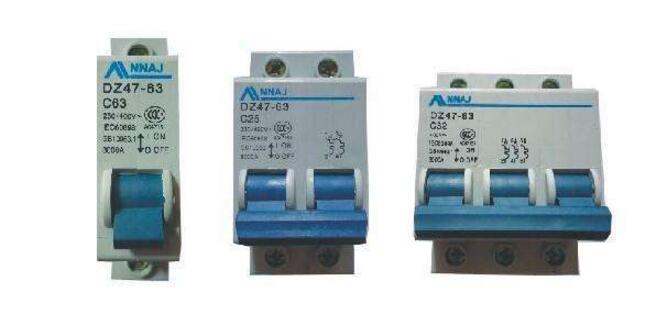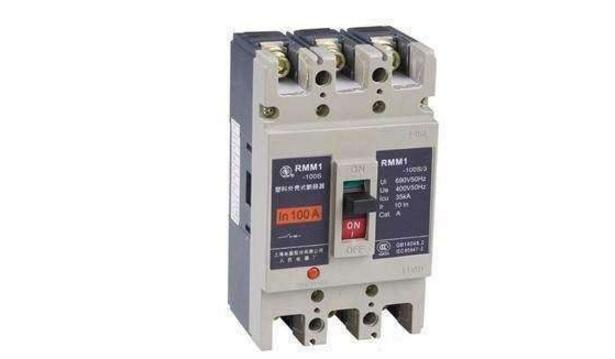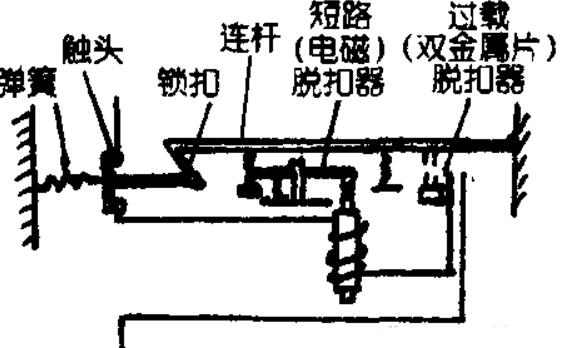The low-voltage circuit breaker (formerly known as the automatic switch) is a switching device that can not only turn on and off the normal load current and the overload current, but also can switch on and off the short-circuit current. In addition to the control function, the low-voltage circuit breaker has certain protection functions, such as overload, short circuit, under voltage and leakage protection. There are many types of low-voltage circuit breakers, which are classified according to the type of use, selective (protective device parameters are adjustable) and non-selective (protective device parameters are not adjustable), according to arc extinguishing media, air and vacuum (currently domestic Mostly air type). Low-voltage circuit breakers have a wide range of capacities, from a minimum of 4A to a maximum of 5000A. Low-voltage circuit breakers are widely used in the feeding lines of all levels of low-voltage power distribution systems, power control of various mechanical equipment and control and protection of power terminals.

China's low-voltage electrical standards stipulate that low-voltage circuit breakers should have the following characteristics:
(1) Type:
The circuit breaker type includes phase number, pole number, rated frequency, arc extinguishing medium, closing mode and breaking mode.
(2) Main circuit rating:
The main circuit rating is:
1 rated working voltage; 2 rated current; 3 rated short-time turn-on capability; 4 rated short-time withstand current.
The rated current of the universal circuit breaker is also divided into the rated current of the main circuit and the rated current of the frame level.
(3) Rated working system:
The rated working system of the circuit breaker can be divided into 8h working mode and long-term working system.
(4) Auxiliary circuit parameters:
The auxiliary circuit parameters of the circuit breaker are mainly auxiliary contact characteristic parameters. The universal circuit breaker generally has three pairs of normally open contacts and normally closed contacts for signal devices and control circuits; molded case circuit breakers generally do not have auxiliary contacts.
In addition to the above items, the circuit breaker characteristic parameters include: the type and characteristics of the trip unit, the type of use, and the like.

The low-voltage circuit breaker enters the home has a great advantage over the knife switch: First, it can break the large current and has an arc extinguishing device, which is suitable for the increase of the load of the household circuit. In addition, its thermal stability and longevity are better than the knife switch. The second is that it automatically cuts off the circuit when a fault occurs. There are two trip units inside the circuit breaker, one is a bimetal thermal trip unit for overload delay protection; the other is an electromagnetic trip unit for short-circuit transient protection. In the home circuit, the fuse is no longer installed after the circuit breaker is used, and the trip unit automatically trips (commonly called trip) in case of a fault to cut off the circuit. Once the fault is removed, it can be re-applied by simply reclosing without replacing the parts.

The circuit breaker has three basic components: the contact and arc extinguishing system, the trip unit, the transmission and the operating mechanism. The working principle can be illustrated by the schematic drawing. The contacts shown in the figures are closed and the latches lock the closing state with a hook to stabilize it. When an overload occurs, the overload tripper acts, and the small multiple overload current bends the bimetal to a certain extent after a certain period of time. At this time, the screw at one end (adjustable) pushes the connecting rod upward to cause the trip to cause instability. The contacts are separated for overload delay protection. When a short circuit occurs, the short-circuit release acts, and the large multiple short-circuit current rapidly attracts the armature to move downward by the magnetic force generated by the electromagnet, and the screw (adjustable) mounted on the other end pushes the link upward, causing the trip to be lost. Stable, the contacts are quickly separated for instantaneous short-circuit protection.
Fiber Optic Box,Fiber Optics Box,Fiber Optic Boxes,Fiber Optic Junction Box
Cixi Dani Plastic Products Co.,Ltd , https://www.dani-fiber-optic.com